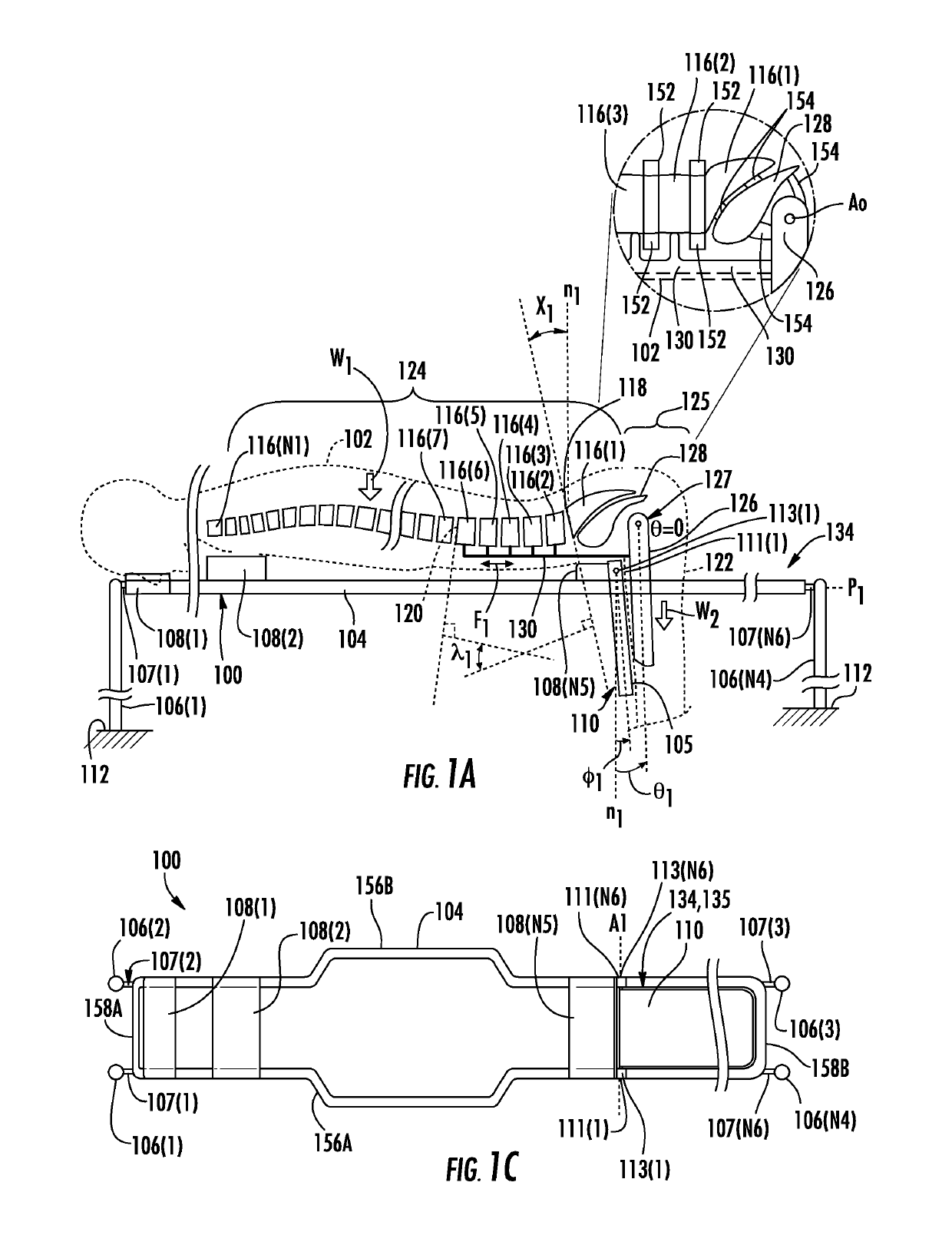Surgical tables for spinal surgeries employing lordosis adjustment subassemblies rotatably connected to rigid frames, and related systems and methods
a technology of lordosis adjustment and surgical tables, which is applied in the field of patient support devices and related assemblies for positioning patients during spinal surgery, can solve problems such as associated pain and complications, and achieve the effects of minimizing frame movement, improving post-operative long-term patient outcomes, and increasing the chance of infection
- Summary
- Abstract
- Description
- Claims
- Application Information
AI Technical Summary
Benefits of technology
Problems solved by technology
Method used
Image
Examples
Embodiment Construction
[0004]Embodiments disclosed herein include surgical tables employing lordosis adjustment subassemblies rotatably connected to rigid frames, and related systems and methods. A surgical table includes a frame supporting a patient in a prone position through subassemblies including body and leg pads. Relative positions of the pads determine a lumbar sagittal lordosis for the patient, and movements of the frame may disrupt a sterile field during surgery and increase opportunities for infections. By rotatably coupling the leg pad as part of a lordosis adjustment subassembly to the frame, a distal end of the leg pad may pass through an inner space defined by the frame to change the relative position of the pads according to the surgical procedures performed while minimizing frame movement. In this manner, post-operative long-term patient outcomes may be improved by providing optimal degrees of lordosis for the surgical procedures occurring during a surgical visit while minimizing infectio...
PUM
 Login to View More
Login to View More Abstract
Description
Claims
Application Information
 Login to View More
Login to View More - R&D
- Intellectual Property
- Life Sciences
- Materials
- Tech Scout
- Unparalleled Data Quality
- Higher Quality Content
- 60% Fewer Hallucinations
Browse by: Latest US Patents, China's latest patents, Technical Efficacy Thesaurus, Application Domain, Technology Topic, Popular Technical Reports.
© 2025 PatSnap. All rights reserved.Legal|Privacy policy|Modern Slavery Act Transparency Statement|Sitemap|About US| Contact US: help@patsnap.com



